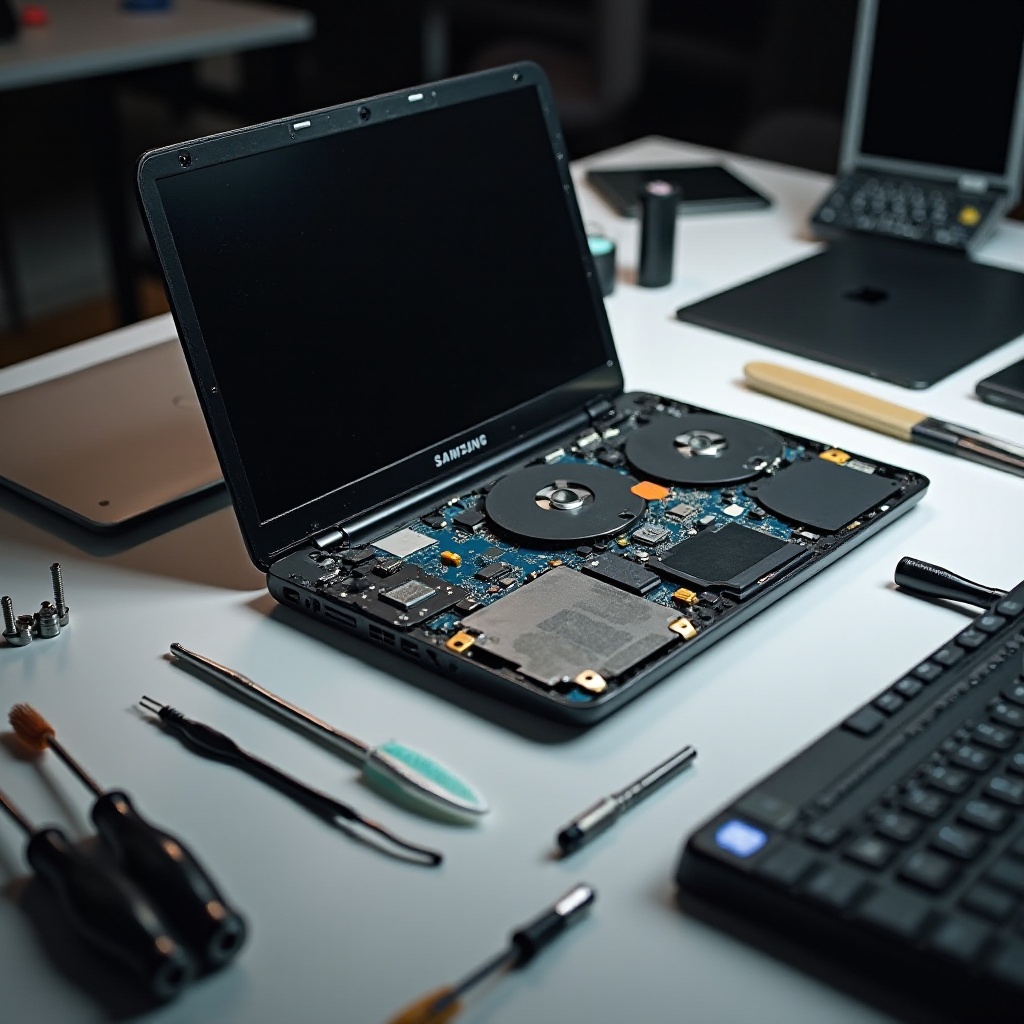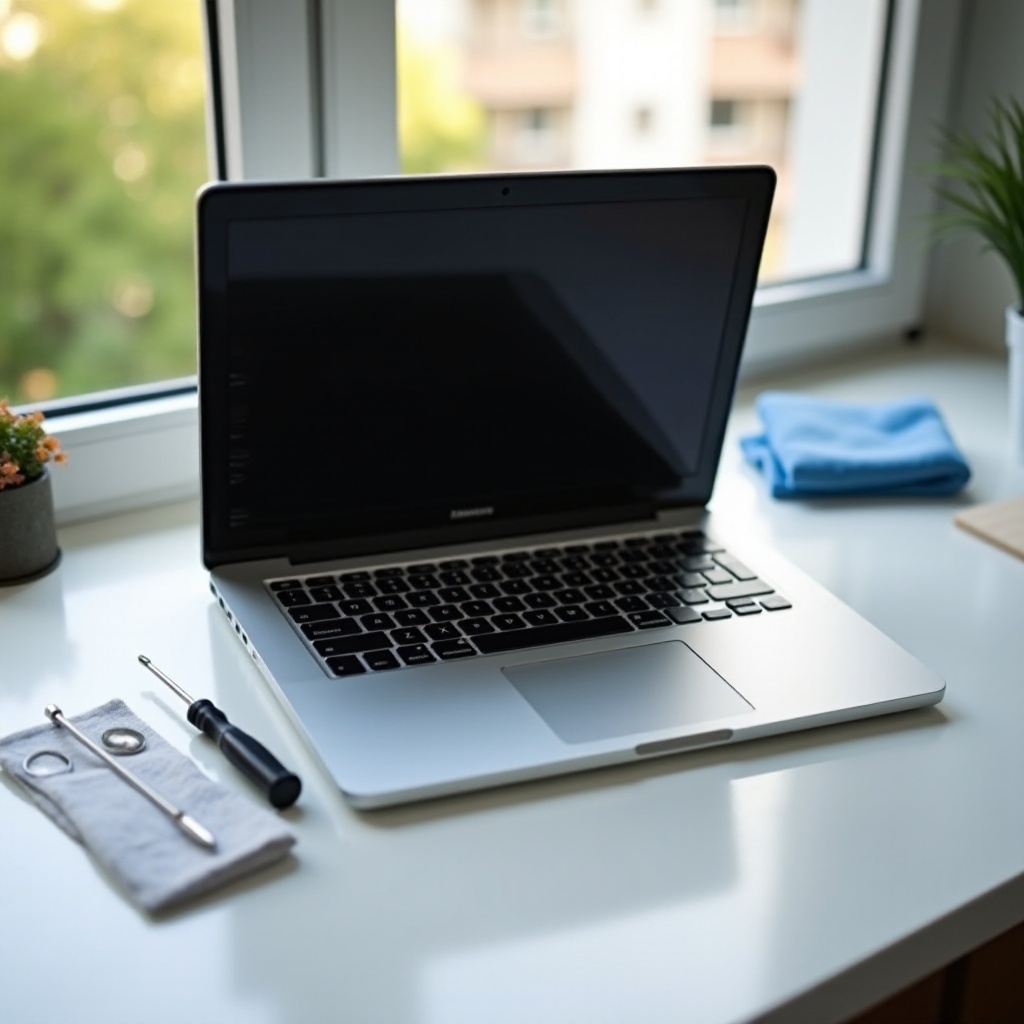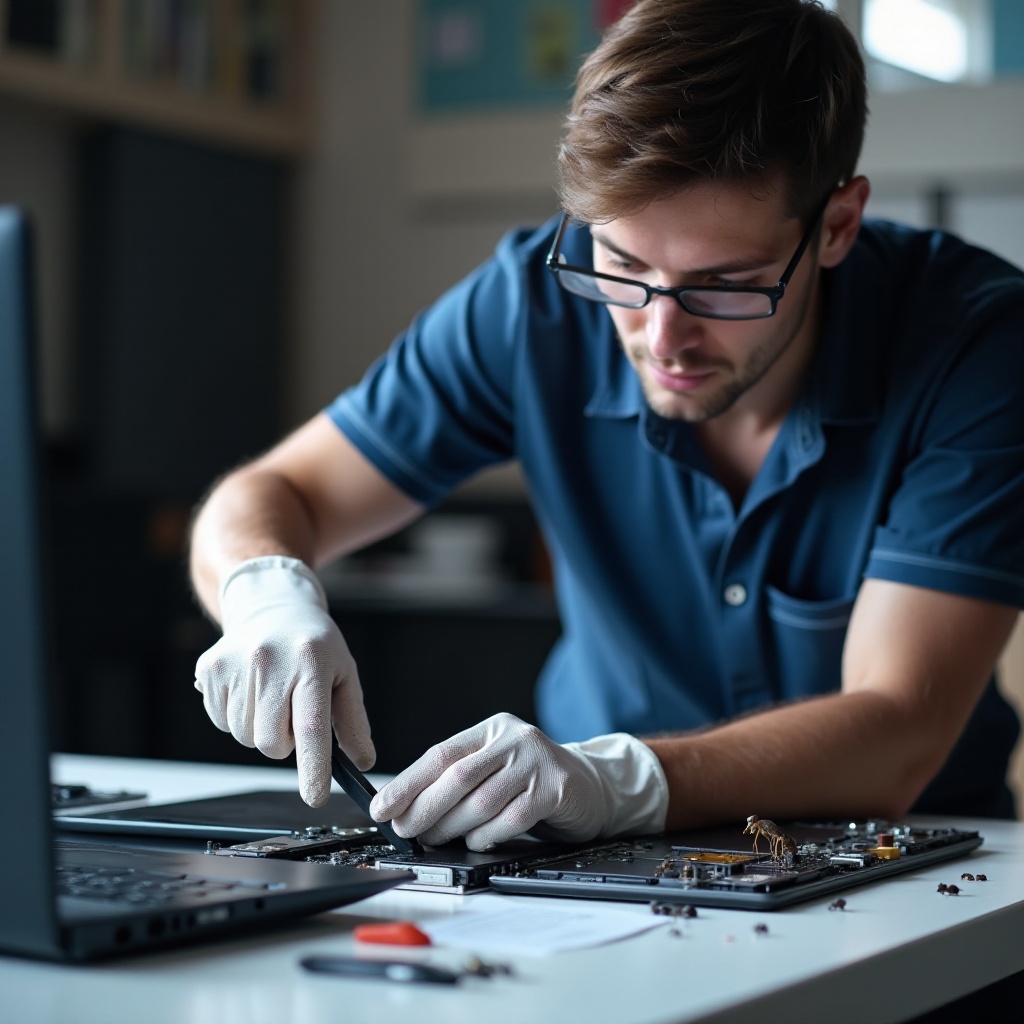Introduction
Ants invading your Samsung laptop can be more than just a nuisance. They can cause significant internal damage, leading to malfunctioning hardware and a shorter lifespan for your device. Removing these tiny invaders requires careful disassembly to ensure your laptop remains intact and functional. This guide will take you through the process step-by-step, from preparing your tools to reassembling your laptop. By following these instructions, you can efficiently clear out any ant infestations and prevent future occurrences.

Tools and Safety Measures
Before you begin the disassembly process, gather all necessary tools and familiarize yourself with essential safety measures.
Tools You’ll Need
- A small Phillips-head screwdriver
- Plastic opening tools
- An anti-static wrist strap
- A soft, clean cloth
- Isopropyl alcohol
- Compressed air canister
- Tweezers
Safety Precautions
- Power Off: Always ensure your laptop is powered off and unplugged from any power source.
- Anti-Static Measures: Wear an anti-static wrist strap to prevent static electricity from damaging internal components.
- Workspace: Set up a clean, well-lit workspace free from clutter to avoid losing any small screws or components.
- Handle with Care: Be gentle when handling internal parts to avoid breakage.
Using the right tools and following these safety protocols will help reduce the risk of damaging your laptop during disassembly.
Preparing for Disassembly
Proper preparation is vital for safely and effectively disassembling your laptop.
Backup Your Data
- Transfer essential files and data to an external storage device.
- Ensure files are backed up to the cloud if possible.
Document the Process
- Take pictures of the laptop at each disassembly stage.
- Note the placement of screws and components for easier reassembly.
These preparation steps will safeguard your data and help you reassemble the laptop without missing any steps.

Step-by-Step Disassembly Instructions
Power Off and Disconnect All Power Sources
- Shut down your laptop completely.
- Unplug the power adapter.
- Remove the battery if it is detachable.
Removing the Back Cover
- Use a Phillips-head screwdriver to remove the screws on the laptop’s back cover.
- Store screws in a container to keep them secure.
- Use a plastic opening tool to gently pry open the back cover.
Locating Ant Colonies
- Inspect the internal components carefully to locate any ant colonies.
- Pay particular attention to areas near the CPU, motherboard, and storage drives.
- Take note of densely populated areas for targeted cleaning.
Cleaning and Removing Ants
- Use compressed air to blow away loose ants and debris.
- Dampen a soft cloth with isopropyl alcohol and gently wipe down affected areas.
- Utilize tweezers to remove stubborn ants stuck in small crevices.
- Ensure you remove all visible ants and thoroughly clean the surrounding areas.
Reassembling the Laptop
- Place the back cover in position and press it down gently.
- Reinsert all screws and tighten them to secure the back cover.
- Reattach the battery if it was removed.
- Power on the laptop to ensure it functions correctly.
Following these steps will help you remove ants from your Samsung laptop without causing any harm to your device.
Troubleshooting Common Issues
If your laptop exhibits any issues after reassembly, these troubleshooting tips can help you resolve them.
- Laptop Won’t Turn On:
- Ensure the battery and power adapter are correctly connected.
-
Recheck all internal components for secure connections.
-
Missing Screws or Components:
- Refer to your documentation and photos to identify the missing parts.
-
Carefully retrace your steps to locate and reattach misplaced items.
-
Laptop Overheats:
- Verify that the cooling fan is free from obstructions.
- Clean any remaining dust or debris.
Effective troubleshooting ensures your laptop remains functional and in optimal working condition post-disassembly.

Maintaining a Clean Laptop
Prevention is better than cure when it comes to keeping your laptop ant-free. Consider adopting these habits to maintain a clean, functioning laptop.
- Regular Cleaning:
- Use compressed air to clean vents and ports monthly.
-
Wipe down the keyboard and exterior surfaces weekly.
-
Avoid Eating Near Your Laptop:
- Food crumbs and spills attract ants and other pests.
-
Maintain a clean workspace to deter ants.
-
Store Properly:
- Keep your laptop in a dry, cool place.
- Use a laptop bag or sleeve to protect it from environmental factors.
Implementing these maintenance tips can help keep your laptop in excellent condition and free from ant invasions.
Conclusion
Disassembling your Samsung laptop to remove ants might seem daunting, but following this comprehensive guide can make the process manageable and effective. With the right tools, safety measures, and detailed steps, you can clear out any ant infestations and keep your laptop running smoothly. Regular maintenance further protects your device from future ant problems, ensuring a longer lifespan and better performance.
Frequently Asked Questions
How can I prevent ants from getting into my laptop in the future?
Maintaining cleanliness, avoiding food and drink near your laptop, and storing it properly can prevent ants.
What safety precautions should I take before disassembling my laptop?
Ensure the device is powered off, unplugged, and use an anti-static wrist strap to prevent electrical discharge.
Is it necessary to clean the laptop even if the ants are removed?
Yes, cleaning removes ant trails and debris, preventing re-infestation and maintaining laptop performance.
